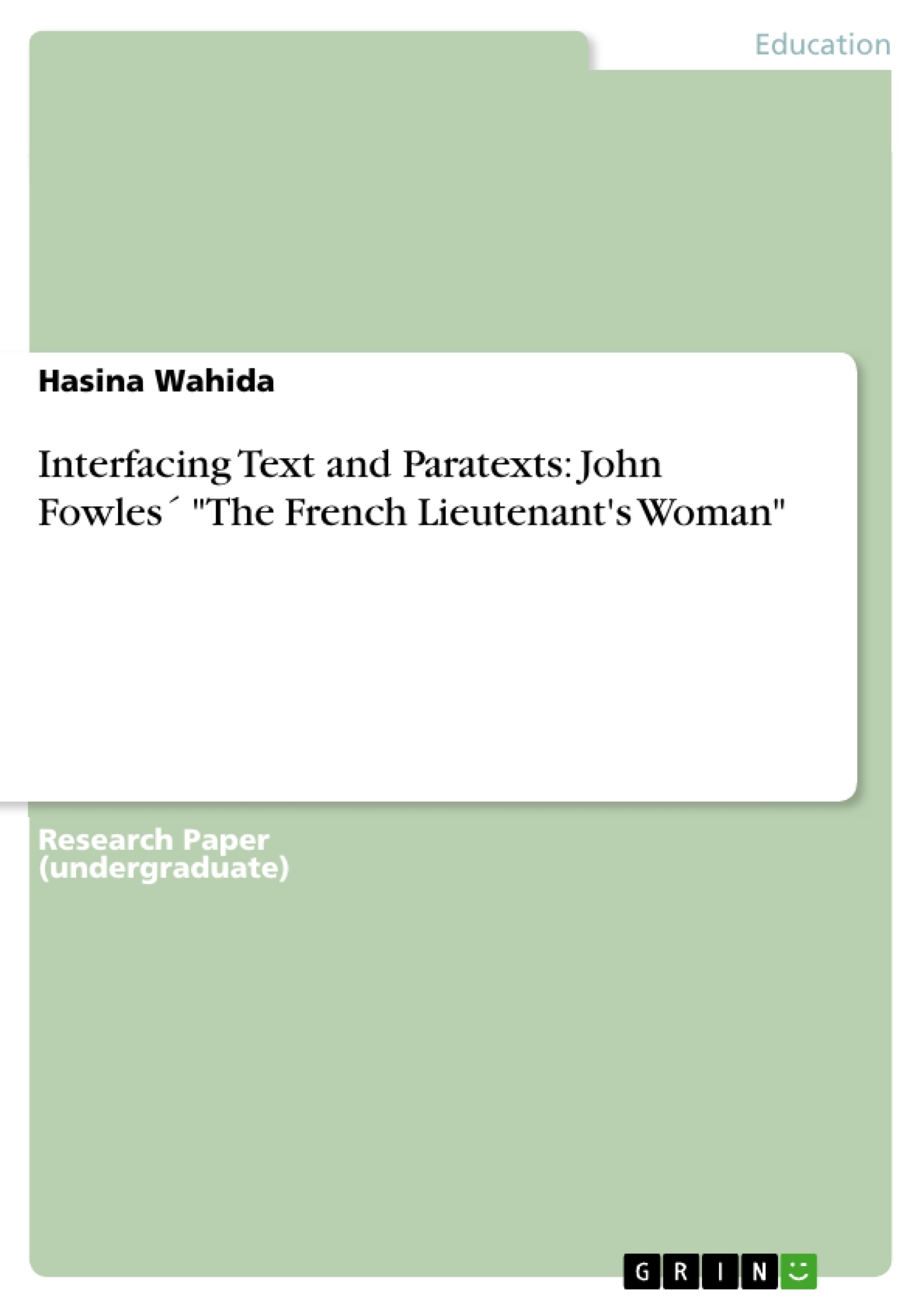John Fowles’ The French Lieutenant’s Woman (1969), a Victorian novel with 20th century outlook, is a wonder of contemporary fiction where Fowles has introduced novel techniques of experimentation and versatility of style making it a postmodern text. Fowles has woven in his oeuvre novel techniques like epigraphs, intertextual echoes, authorial digressions, intrusions etc through which the conflict between the Victorian and the Modern world is dexterously given expression. The present paper proposes to establish a link between the text and the epigraphs, and show thereby their interplay.
Table of Contents
- Interfacing Text and Paratexts: John Fowles' The French Lieutenant's Woman
Objectives and Key Themes
This paper aims to analyze the interplay between the text and paratexts, specifically epigraphs, in John Fowles' The French Lieutenant's Woman. It explores how these paratexts function as intertexts, shaping the reader's understanding of the novel's Victorian setting and its modern perspective.
- The role of epigraphs as paratexts in shaping the narrative.
- The interplay between Victorian and Modern perspectives within the novel.
- The use of intertextuality to create multiple layers of meaning.
- The relationship between the text and its intertextual sources.
- The impact of paratexts on reader interpretation and the "death of the author."
Chapter Summaries
Interfacing Text and Paratexts: John Fowles' The French Lieutenant's Woman: This chapter introduces the central argument concerning the interaction between the text and its paratexts, specifically epigraphs, in John Fowles' The French Lieutenant's Woman. It establishes the concept of paratexts as elements that exist on the margins of the main text, influencing its interpretation. The chapter uses theoretical frameworks from Genette and Barthes to explain the significance of paratexts in postmodern literature and to highlight how they contribute to a polyphony of voices and the empowerment of the reader. The chapter also touches upon the novel's unique blend of Victorian setting and modern sensibilities, setting the stage for a detailed examination of specific epigraphs and their relationship to the narrative. Examples from the novel are briefly introduced to illustrate the concept of intertextuality, where the epigraphs create dialogues and resonances with other texts. The chapter emphasizes the intentional nature of Fowles' use of epigraphs, arguing against a purely stylistic approach and highlighting their function as meaningful commentaries on the narrative.
Keywords
John Fowles, The French Lieutenant's Woman, paratexts, epigraphs, intertextuality, Victorian literature, postmodernism, reader response, authorial intrusion, narrative technique.
John Fowles' The French Lieutenant's Woman: A Guide to the Text
What is the main focus of this academic preview?
This preview offers a comprehensive overview of an academic paper analyzing the interplay between the text and paratexts (specifically epigraphs) in John Fowles' The French Lieutenant's Woman. It explores how these paratexts shape reader understanding of the novel's Victorian setting and modern perspective.
What are the key themes explored in the paper?
The paper examines the role of epigraphs in shaping the narrative, the interplay between Victorian and modern perspectives, the use of intertextuality to create multiple layers of meaning, the relationship between the text and its intertextual sources, and the impact of paratexts on reader interpretation and the concept of the "death of the author."
What theoretical frameworks are used in the analysis?
The analysis draws upon the theoretical frameworks of Genette and Barthes to explain the significance of paratexts in postmodern literature and how they contribute to a polyphony of voices and reader empowerment.
What is the purpose of the chapter summaries?
The chapter summaries provide a concise overview of the main arguments and analyses presented in the full academic paper. The summary for the main chapter, "Interfacing Text and Paratexts: John Fowles' The French Lieutenant's Woman," details the introduction of the central argument regarding the interaction between the text and its paratexts, the use of theoretical frameworks, and the examination of specific epigraphs and their relationship to the narrative.
What are the key terms and concepts used in this paper?
Key terms and concepts include: John Fowles, The French Lieutenant's Woman, paratexts, epigraphs, intertextuality, Victorian literature, postmodernism, reader response, authorial intrusion, and narrative technique.
What is the overall objective of the paper?
The paper aims to analyze how the paratexts, specifically the epigraphs, function as intertexts, influencing the reader's interpretation and contributing to the multifaceted nature of the novel's meaning.
How does the paper approach the analysis of epigraphs?
The paper argues against a purely stylistic approach to the epigraphs and emphasizes their intentional function as meaningful commentaries on the narrative, contributing to the overall meaning and interpretation of the novel.
- Quote paper
- Hasina Wahida (Author), 2012, Interfacing Text and Paratexts: John Fowles´ "The French Lieutenant's Woman", Munich, GRIN Verlag, https://www.grin.com/document/189673



